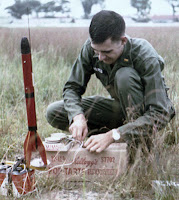Plants, and bacteria, and fungi! Oh My!
 |
| Image - Wanderlust Travel |
 |
| Nancy Johnson collecting soil samples in the Serengeti |
Abstract: The global biogeography of microorganisms remains largely unknown, in contrast to the well-studied diversity patterns of macroorganisms. We used arbuscular mycorrhizal (AM) fungus DNA from 1014 plant-root samples collected worldwide to determine the global distribution of these plant symbionts. We found that AM fungal communities reflected local environmental conditions and the spatial distance between sites. However, despite AM fungi apparently possessing limited dispersal ability, we found 93% of taxa on multiple continents and 34% on all six continents surveyed. This contrasts with the high spatial turnover of other fungal taxa and with the endemism displayed by plants at the global scale. We suggest that the biogeography of AM fungi is driven by unexpectedly efficient dispersal, probably via both abiotic and biotic vectors, including humans.
 |
| WCS WILDLIFE PICS OF 2017 |
The complex Serengeti ecosystem, which spans 12,000 square miles extending from northern Tanzania into southwestern Kenya, is home to millions of animals, including 70 species of large mammals. It is a hotspot for mammal diversity—including herbivores such as wildebeest, zebra and gazelles that graze on grasses and trees, as well as lions, crocodiles, leopards and hyenas that survive by preying on the grazing herbivores.
A (New Study) published in the Journal of Ecology by a team of Northern Arizona University researchers shows the food web supporting this remarkable variety of wildlife would appear very different without the nutrients supplied by arbuscular mycorrhizal (AM) fungi. The interdisciplinary study, authored by graduate students in NAU’s School of Earth Sciences and Environmental Sustainability —Bo Stevens, Jeffrey Propster, Andrew Abraham and Chase Ridenour—along with assistant professor of informatics, computing, and cyber systems Christopher Doughty and Regents’ Professor of Earth Sciences and Environmental Sustainability Nancy Johnson, quantifies the importance of AM fungi in the soil of the Serengeti National Park in Tanzania.
 |
| Illustration by Victor Leshyk Artist’s depiction of the Serengeti food web with normal AM (left) and a hypothetical food web without nutrient inputs from these important symbioses (right). |
AM fungi, a type of mycorrhizal fungi, penetrate the roots of grasses and other plants native to the Serengeti. Considered natural biofertilizers, AM fungi provide their host plants with water, nutrients and pathogen protection in exchange for photosynthesis. The symbiotic relationship between AM fungi and plants, which has evolved for millions of years, is critical for the uptake of essential plant nutrients such as phosphorus. In turn, the nutritional quality of the plains’ grasses and trees influences the biomass of the herbivores and their predators.
By creating an ecosystem simulation that enabled the researchers to measure the biomass of AM fungi across a natural soil fertility gradient and estimate the contribution of mycorrhizal symbioses to the biomass of all plants and animals in the Serengeti, the researchers were able to estimate the animal biomass that results from phosphorus supplied to plants through AM fungi.
This study shows the contribution of mycorrhizal symbioses to the growth and nutritional quality of grasses cascades through the biomass of large grazing mammals and their predators. Although AM fungi amount to less than 1 percent of the overall living biomass in the Serengeti, their predicted nutrient inputs into the food web doubled animal biomass.
“It’s really surprising that a small group of microbes can have such a large impact on an entire ecosystem,” said Stevens, lead author of the study. “We always knew that mycorrhizal fungi were important for grass nutrition in the Serengeti. Now we can say how important they are for the nutrition of animals up the food chain, from zebras to lions.”
(Source)
"The answer my friendisisn't blowing in the wind"
 |
| Image - Roeselien Raimond |
 |
| Image - Earthcrew Inc |
Take this species of endo-mycorrhizae in the photo at left here is found in most popular commercial Mycorrhizal inoculent blends offered by many companies. Glomus deserticola fungi are found everywhere around the globe, even Siberia. I assume it was given the name because it was first recorded and given the name from it's first documented location in the southwest. It's an important fungal species, because they are found in nearly all terrestrial habitats, including arable land, deserts, grasslands, temperate, boreal, tropical forests, and tundras. Anyway the mode of movement is still very intriguing and fascinating. Next time you hear someone recite an old chant of, "You don't need to inoculate because the spores are just everywhere out there in the air," don't believe them. Inoculate anyway. 😉 Now, let's consider another important possibility of spore travel that the researchers mentioned above left out.
NASA Earth Observatory: "Smoke's Surprising Secret"
 |
| credit: US Air Force photo |
 |
| (Image by Mark Gray, GSFC) |
 |
| (Photograph by Forrest M. Mims III) |
 |
| (Digital Scans by Sarah A. Mims) |
(Source: Earthobservatory.nasa.gov/Features/SmokeSecret)
Earlier Relevant References on the same subject from the Northern Arizona University
 |
| (Image courtesy Victor O. Leshyk) |
"Ectomycorrhizal fungi (the mushrooms connected to the roots of the tree) increase the uptake of nitrogen by the plant, even when that nutrient is scarce in soils. Arbuscular mycorrhizal fungi (associated with the grass roots on the left) do not provide that advantage to their host."
NAU’s Hungate co-authors research report published in ‘Science’
 |
| Credit: mdd/Shutterstock |
Study of Serengeti soil may provide model for increasing productivity of croplands in U.S. (2011)
Mycorrhizal Fungal Blend Producing companies
 |
Mycorrhizal Applications Inc |
 |
| Image - Valent Valent: MycoApply® EndoPrimeTM |

No comments:
Post a Comment
Thanks for visiting and for your comments!
I will try to respond to each comment within a few days, though sometimes I take longer if I'm too busy which appears to be increasing.